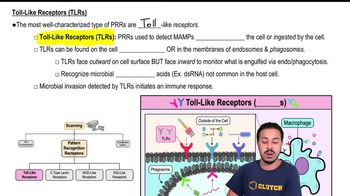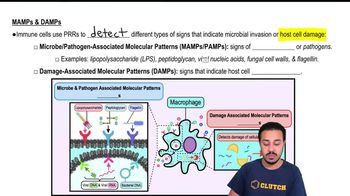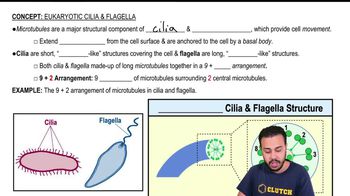Here are the essential concepts you must grasp in order to answer the question correctly.
Toll-like Receptors (TLRs)
Toll-like receptors are a class of proteins that play a crucial role in the immune system by recognizing pathogens. They are located on the surface of immune cells and detect specific molecular patterns associated with various microbes, such as bacteria and viruses. Each TLR is specific to certain pathogen-associated molecular patterns (PAMPs), which helps initiate an immune response.
Recommended video:
Pathogen-Associated Molecular Patterns (PAMPs)
PAMPs are conserved molecular structures found on the surface of pathogens, such as bacteria, viruses, and fungi. They include components like lipopolysaccharides, peptidoglycan, and nucleic acids that are recognized by TLRs. The identification of PAMPs by TLRs triggers signaling pathways that lead to the activation of immune responses, including inflammation and the production of cytokines.
Recommended video:
Eukaryotic Flagellar Proteins
Eukaryotic flagellar proteins are components of the flagella found in eukaryotic cells, which are used for movement. Unlike PAMPs that are typically associated with pathogens, these proteins are not recognized by TLRs as they are part of the host's own cellular structure. This distinction is important in understanding which molecules are targeted by TLRs and which are not.
Recommended video:
Eukaryotic Cilia & Flagella
 Verified Solution
Verified Solution



 2:59m
2:59m
